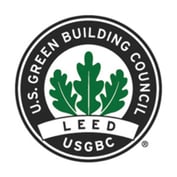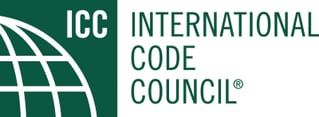2024 Top Trends Impacting Commercial Building Products Manufacturing

Stay Ahead with These Trends
The commercial building products manufacturing industry is continually evolving, driven by technological advancements, sustainability demands, and changing market dynamics. As we progress through 2024, several key trends are shaping the landscape, offering both challenges and opportunities for manufacturers. Here’s a look at the top trends impacting the industry this year.
1. Sustainability and Green Building Materials
Sustainability remains at the forefront of the commercial building industry. Manufacturers are increasingly focused on developing eco-friendly products that reduce the environmental impact of construction. This includes the use of recycled materials, low-VOC (volatile organic compounds) products, and energy-efficient solutions. Green certifications, such as LEED (Leadership in Energy and Environmental Design), Energy Star, EPD (Environmental Product Declaration) and NGBS (National Green Building Standard) are becoming more critical, pushing manufacturers to innovate and meet stringent sustainability standards.
2. Advanced Manufacturing Technologies
The adoption of advanced manufacturing technologies is transforming the production processes. Techniques such as 3D printing, automation, and robotics are enhancing precision, reducing waste, and improving efficiency. These technologies allow for greater customization and flexibility in product design, enabling manufacturers to meet specific client needs more effectively.
3. Digitalization and IoT Integration
Digital transformation is sweeping across the industry, with the integration of the Internet of Things (IoT) playing a significant role. Smart sensors and connected devices provide real-time data on product performance, maintenance needs, and supply chain logistics. This connectivity not only improves operational efficiency but also enhances product lifespan and reliability.
4. Resilient and Adaptive Building Products
With the increasing frequency of extreme weather events and natural disasters, there is a growing demand for  resilient and adaptive building products. Manufacturers are developing materials that can withstand harsh conditions, such as severe weather roof hatches, fire-retardant materials, and flood-proof building systems. These products are designed to protect structures and ensure occupant safety in the face of unpredictable environmental challenges.
resilient and adaptive building products. Manufacturers are developing materials that can withstand harsh conditions, such as severe weather roof hatches, fire-retardant materials, and flood-proof building systems. These products are designed to protect structures and ensure occupant safety in the face of unpredictable environmental challenges.
5. Health and Wellness Focus
The COVID-19 pandemic has heightened awareness around health and wellness in commercial buildings. There is a surge in demand for building products that enhance indoor air quality, reduce the spread of pathogens, and create healthier indoor environments. This includes advanced HVAC systems, antimicrobial surfaces, entrance flooring systems, and touchless technologies.
6. Circular Economy Practices
The shift towards a circular economy is influencing product development and lifecycle management. Manufacturers are exploring ways to design products that can be easily disassembled, recycled, or repurposed at the end of their life. This approach minimizes waste and supports sustainable resource management, aligning with global sustainability goals.
7. BIM and Digital Twin Technologies
Building Information Modeling (BIM) and digital twin technologies are revolutionizing the design and construction process. BIM allows for detailed 3D modeling and simulation, improving collaboration and reducing errors. Digital twins, which are virtual replicas of physical assets, enable real-time monitoring and predictive maintenance, enhancing the efficiency and longevity of building products.
8. Supply Chain Resilience
The disruptions caused by the COVID-19 pandemic and geopolitical tensions have highlighted the importance of resilient supply chains. Manufacturers are diversifying their supply sources, investing in local production capabilities, and utilizing digital tools to manage supply chain risks. This trend is crucial for ensuring the timely delivery of building products and maintaining project schedules.
9. Smart Building Integration
The rise of smart buildings is driving demand for intelligent building products that can integrate seamlessly with building management systems. Smart windows, lighting systems, and HVAC controls are becoming standard features in commercial properties, offering enhanced energy efficiency, convenience, and occupant comfort.
10. Regulatory and Compliance Changes
Regulatory requirements and compliance standards are continually evolving, impacting product development and market access. Manufacturers must stay abreast of changes in building codes, environmental regulations, and safety standards. Compliance not only ensures legal adherence but also positions companies as trustworthy and responsible industry leaders.
The commercial building products manufacturing industry is navigating a period of significant transformation in 2024. Sustainability, technology, health, and resilience are at the core of this evolution, driving innovation and redefining industry standards. By embracing these trends, manufacturers can not only meet current market demands but also pave the way for a more sustainable and efficient future in commercial construction.
Nystrom is here to help navigate today's trends from specification and product selection, to building codes and maintenance. Reach out to our Sales & Customer Support team or visit our website before you start your next project.






.png)
